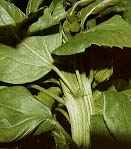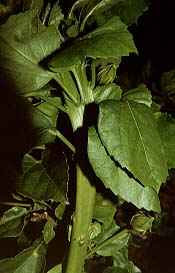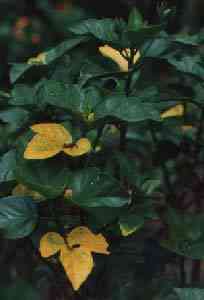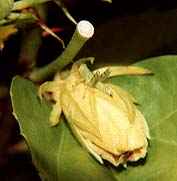
Bud
Drop
Premature Floral bud drop of Hibiscus is usually
associated with Bugs, Hibiscus
Beetle & Caterpillars which attack these buds in their early development.
Once the
flower bud has developed to the point of opening, they appear not to drop as
readily
despite continued insect attack.
At times when temperatures are
excessive this will also cause some bud drop.
The lack of production of
flower buds can be sourced to excessive use of Nitrogen which stimulates
vegetative growth at the expense of flower bud formation.
.

Not usually a major problem with Hibiscus as it can be with other plants such
as Citrus & Camellias.
In severe cases could be an indication of the
inability of the plant utilize iron due to an alkaline
soil.
This would be indicated by interveinal chlorosis
Yellowing
of growing tips & or white flecking on the opening flower buds may be an
indication of glyphosate
toxicity (Roundup herbicide damage).
.
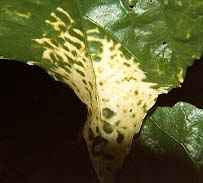
In some cases the frost or freezing conditions may be slight & the
Hibiscus may be sufficiently mature with a dense enough canopy to withstand the
freeze with only marginal surface damage which darkens once the thawing is
completed.
It is suggested that in minor cases of freeze or frost to leave
damaged plant parts on the Hibiscus & this will protect the undamaged
inside parts. (mainly the branches)
Plastic covering is not
recommended in the protection of Hibiscus that are subject to freezing
conditions.
The underside of the plastic will condensate moisture & will
freeze compounding the problem.
Covering young plants with hession / calico
bags or newspaper is effective in light freeze conditions.
Under very
severe cold conditions some Hibiscus fanciers take their containerized hibiscus
inside for protection from their local Winters.
When Spring arrives they
optionally place them out in the garden free standing in their pots or bury the
pot into the ground up to the pot rim & the Hibiscus remain in this position
until they are returned inside again in the Autumn / Fall.
In colder
parts of Europe Hibiscus are grown by the millions as small indoor potted colour
& are disposed of once they stop flowing & another purchased to replace
the previous one.


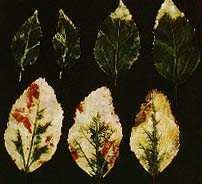
pH
The measurement of pH is indicated by the
free Hydrogen Ions within a medium
The extremes range from Acid, Zero
(0) to Alkaline of Fourteen (14)
The ideal pH range of Hibiscus is a
slightly acid 6.0 to 6.5
Within this range the Hibiscus plant is able
to access the nutrients at the quantities required for healthy growth.
Below
is a graphical chart which indicates the availability of nutrients at different
ranges of pH.
The measurements of the readings are indicated by the width if
the white line for each nutrient intersecting with the Ph measurements.
Eg. at the Extremely Acid reading of 4.0 the Element Iron is available at
its maximum to the plant & all of the other elements are not so readily
available.
To increase the pH of the medium the addition of Calcium in the form of lime
will suffice.
Some fertilizers have Calcium as an addition & this is
also a way of increasing or stabilizing the pH.
To decrease the pH of the medium the addition of Sulfur in the form of
sulfates will suffice.
Some fertilizers have sulfates as an addition &
this is also a way if decreasing the the pH.
The addition of organic matter
will assist with the acidifying process.
Either way of adjusting the pH always remember, the results of change are not
immediate & some weeks to months are required subject to soil temperature
& microbial activity to read an accurate & true reading.
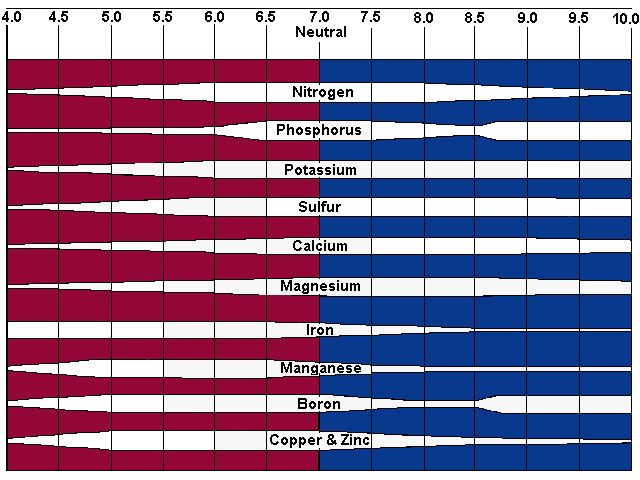
Root
Bound
The binding of roots is not as common as once was do
to the improvement of container design which has reduced the likelihood of
roots spiraling within the container.
To avoid the chances of root
binding it is better to purchase plants that are not pot bound & to tease
out the roots sufficiently to give the older roots a chance to grow & move
out into the new soil when planted.
.
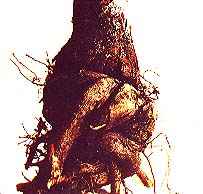
A Selection Of Popular Variegated
Hibiscus
Sizes: (Approx.) X .25
Variegated
H. darcyii. |
H.
Snow Queen.. |
H. Rose Flake |
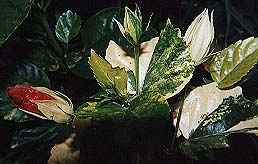 |
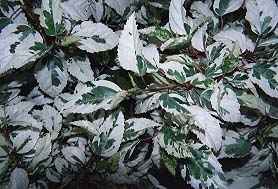 |
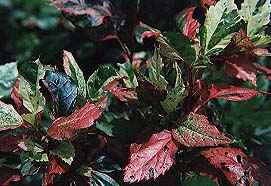 |
Witches Broom
Also known as Fasciation
This abnormality most commonly involves the flattening of Hibiscus stems,
instead of the stem being rounded. It develops into a larger, flatter stem
appearing as many stems fused together & is considered to be a mutation.
Daphne, Celery & Celosia are commonly affected.
The removal of the
flattened parts usually controls this form of disorder.

